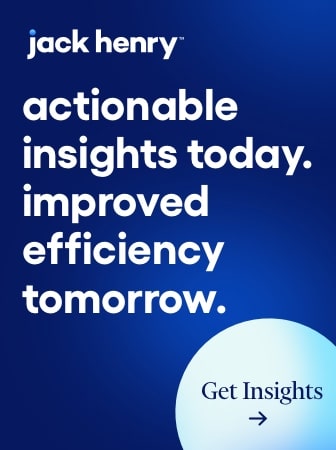The report: “Delinquency Is Increasingly in the Cards for Maxed‑Out Borrowers”
Source: Liberty Street Economics, Federal Reserve Bank of New York
Why we picked it: Rising credit card balances are a critical focus for bankers, and this report digs into the rising risk of delinquency and its ripple effects throughout the economy.
Executive Summary
The New York Fed’s latest Quarterly Report on Household Debt and Credit reveals a concerning trend in credit card delinquencies. While aggregate credit card utilization rates remain stable, a significant portion of borrowers are nearing or exceeding their credit limits. Dubbed “maxed-out borrowers,” these individuals are increasingly likely to miss credit card payments, accounting for the bulk of rising delinquency rates.
The report highlights the strong correlation between high utilization and future delinquencies, with about a third of balances held by maxed-out borrowers going delinquent in the past year, compared to less than a quarter pre-pandemic. Younger generations and borrowers in low-income areas are particularly vulnerable to being maxed-out, signaling potential cash flow constraints.
Key Takeaways:
- Credit card delinquencies have surpassed pre-pandemic levels, driven primarily by maxed-out borrowers.
- High credit utilization is a strong predictor of future missed payments and delinquencies.
- Younger generations and low-income borrowers are more likely to be maxed-out on their credit cards.
- Continued increases in maxed-out borrowers could further exacerbate credit card delinquency rates.
The New York Fed’s Quarterly Report on Household Debt and Credit for the first quarter of 2024 has shed light on a concerning trend in credit card delinquencies. While overall household debt balances grew moderately, credit card delinquencies have risen past pre-pandemic levels, raising questions about the sustainability of this trend.

Modern Customer Journey Mapping
Customers navigate a multi-touch, multi-channel journey before interacting with your brand. Do you deliver successful and seamless experiences at every touchpoint? Download webinar.

The unfair advantage for financial brands.
Offering aggressive financial marketing strategies custom-built for leaders looking to redefine industry norms and establish market dominance.
Maxed-out borrowers are driving delinquency increases: One key factor contributing to the rise in credit card delinquencies is the increasing share of borrowers who are “maxed-out,” or using 90% or more of their available credit limit. These individuals are more likely to miss credit card payments due to potential cash flow constraints and tight budgets.
The data reveals a strong correlation between high credit card utilization and future delinquencies. In the first quarter of 2024, borrowers who became newly delinquent had a median utilization rate of 90% in the previous quarter, compared to just 13% for those who remained current.
A Scary Thought:
18% of borrowers are using at least 90% of their available credit limit (maxed-out).
Alarming trends for maxed-out borrowers: The transition rates to delinquency for maxed-out borrowers have surpassed pre-pandemic levels and continue to rise. About a third of balances associated with these borrowers have gone delinquent in the last year, compared to less than a quarter before the pandemic.
While delinquency transition rates for borrowers with lower utilization (below 60%) have returned to pre-pandemic levels, those with higher utilization rates continue to see increasing delinquencies, accounting for most of the overall increase in credit card delinquency rates.
Where the Cards Lie:
About a third of balances held by maxed-out borrowers transitioned to delinquency in the last year.
Demographic disparities in credit utilization: The report also highlights demographic disparities in credit card utilization and the incidence of being maxed-out. Borrowers in lower-income areas and younger generations are more likely to be maxed-out on their credit cards.
The median credit limit for the lowest income quartile is $11,300, compared to $25,800 for the highest quartile. As a result, 12.3% of borrowers in the lowest income areas are maxed-out, compared to just 5.5% in the highest income areas.
Similarly, 15.3% of Gen Z credit card users are maxed-out, the highest among all generations. In contrast, only 4.8% of Baby Boomers are in this category. This disparity can be attributed to shorter credit histories, lower credit scores, and lower incomes among younger generations.

Outlook and Implications
As the share of maxed-out borrowers continues to climb, approaching pre-pandemic levels, the risk of further increases in credit card delinquencies looms. Unless delinquency transition rates among maxed-out borrowers begin to decline or the share of maxed-out borrowers falls, credit card delinquencies are likely to continue rising.
The report emphasizes the need for monitoring these trends closely, as macroeconomic conditions can influence delinquency rates in either direction. However, the current trajectory raises concerns about the financial well-being of households, particularly those with limited incomes and younger generations navigating the early stages of their credit journeys. Financial institutions should explore strategies to mitigate the risk of further delinquency increases and promote sustainable borrowing practices.
Editor’s note: This article was prepared with AI language software and edited for clarity and accuracy by The Financial Brand editorial team.
Looking for more information on credit card trends?







